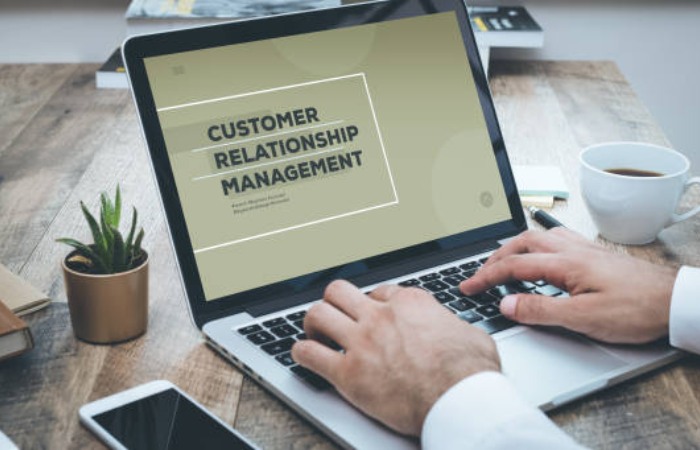During the holiday Marketing season, the world’s leading brands use marketing to evoke emotions, promote messaging, and create memorable moments. They are looking for ways to differentiate themselves from their competitors by using various marketing tactics and providing the best holiday shopping experience to penetrate the minds and hearts of Customers.
While there is no specific formula for success, brands have found that there are practical methods to achieve the best results with holiday Marketing loyalty program promotions. These strategies can help companies and organizations acquire new customers and develop them into loyal brand advocates by maximizing pay-per-click advertising spend and creating a sense of urgency to increase the price of goods or services.
Why Customer Loyalty Programs are Important for Holiday Marketing

Effective loyalty programs increase customer retention, sales, and customer satisfaction. Business leaders can use big data technology to mark loyalty offers and increase the likelihood that customers will return to redeem their opinions.
In the future, blockchain technology could wholly disrupt the current loyalty program paradigm. Brands currently incur significant costs for storing collected loyalty program data. However, blockchain can provide a solution to verify, store, and protect brand loyalty information at a fraction of what it would traditionally cost to manage these movements.
Here are five details of why building brand loyalty in the holiday Marketing is innovative and essential.
1. Loyalty programs are a cost-effective way to build a business.
Some entrepreneurs may think loyalty programs consume money and resources without guaranteeing success. However, in reality, acquiring new customers costs more. Promoting brand loyalty programs to your existing customer base is more likely to provide a noticeable return on investment.
2. Loyalty programs generate actionable data.
Demographic data is one of the most important resources available to dealers. Detailed buyer data helps marketers develop strategic plans to increase sales.
In today’s volatile shopping environment, marketers must understand what drives sales and hinders conversion. Loyalty programs are a form of exploration that helps advanced data analytics marketers understand consumer purchasing patterns.
3. Consumers love loyalty programs.
Brands that offer loyalty rewards outweigh competitors that don’t offer similar programs. Loyalty programs tell consumers that a brand is interested in more than profit. This type of reward helps brands build mutually beneficial relationships with customers.
4. Loyalty programs increase brand awareness.
Loyalty programs encourage new patrons to make repeat consumptions faster than without an incentive. In addition, these programs make existing customers feel valued, thereby improving brand perception and increasing the likelihood that consumers will recommend products or services to friends, family members, and colleagues. The more customers feel valued, the more likely they are to make referrals; some may become brand advocates.
5. Loyalty programs have a successful track record.
While the results of loyalty programs vary, they are time-tested and proven methods. Business leaders have successfully implemented loyalty programs in many industries. The growth hacker movement originated from a perfect based on loyalty program. Growth hackers, who use their time and resources to expand their business, view customer loyalty as the easiest way to drive new business growth.
Loyalty programs enable brands to make sense of ownership and build strong emotional relationships with customers while empowering business leaders to deliver an improved experience with every interaction. These experiences form a foundation that improves with every interaction. Loyalty programs focus on consumers and make brand endorsements and referrals more attractive.
During the holiday season, consumers are exposed to numerous emails, social media advertisements, television advertisements, and other marketing channels. Savvy business owners can use loyalty programs to stand out from the competition during the holiday Marketing season.
Best Business Software for Loyalty Programs
Creating a loyalty program requires extensive data management, but the best CRM answers and very-rated POS systems can help:
CRM software

- Salesforce CRM: This customer bond management (CRM) software is the best option for companies looking to expand. The software has various features that are continually evolving to meet the needs of growing businesses, including detailed CRM metrics press, a loyalty management platform, and a suite of Sales Cloud additions. Salesforce software costs $25 per user per month with a 14-day free pilot.
- com: Monday CRM software is an excellent option for companies that want to customize their processes extensively. The software delivers over 200 visual dashboard templates, custom widgets, forms, email templates, and a complete lead management cycle. Though Monday offers a 14-day free trial for paid plans, users can also benefit from the free plan, which includes 500MB of cloud text storage for two users.
- Zoho: Zoho software is an easy-to-use solution for improving customer loyalty programs. Zoho CRM CRM software is available starting at $14 per user per month. It includes a precise mobile app that offers conversational AI and advanced reporting capabilities, including remote access to analytics. Visual dashboards, and sales intelligence to accelerate sales.
- Keap: Although Keap’s CRM software is more expensive ($129 per worker per month), it can be cast off immediately without any setup. It offers 10GB of cloud storage, various mechanization templates, and advanced workflows that use drag-and-drop manufacturers to suit your business needs. With Keap, companies can set up triggered workflows that automatically reach customers with automated reminders and notifications and customized and updated offers based on certain conditions, such as a customer’s birthday or holiday Marketing.
POS systems

Lightspeed: Lightspeed point-of-sale (POS) software starts at $69 per month and is suitable for various industries, including restaurants, retail stores, and golf trades. As one of the best POS schemes for retail, Lightspeed boasts a built-in CRM ideal for companies looking to build their customer loyalty program, allowing businesses to track customer purchase history, create and edit customer shapes, and develop rewards programs and special promotions to stimulate customers.
TouchBistro: TouchBistro is a customizable POS software that offers many features tailored to the restaurant industry. The system starts at $69 per month and is optimized for all restaurants, from full-service restaurants to bars and breweries. Among TouchBistro’s wide range of sorts is the ability to add customer meeting products, including loyalty plans, online ordering. And reservations to encourage customers to return.
GoDaddy: The GoDaddy POS system is ideal for e-commerce businesses as it offers several unique features, including templates for website creation and connecting to a customer’s domain, starting at $6.99 per month. Along with traditional loyalty offers like coupons, gift cards. And online sales tracking, GoDaddy offers abandoned cart recovery, email marketing, and list segmentation to encourage customers to return.
Square: As one of the chief companies in the POS terminal industry, Square provides excellent customer loyalty opportunities for retailers, restaurants, and small businesses through its free, all-inclusive service. Square offers customer loyalty program features Including creating digital punch cards and a rewards program. As an add-on to swell a business’s POS system to meet individual needs.
Frequently Asked Questions
1. What is Holiday Marketing?
Holiday marketing refers to companies’ unique campaigns and plans to promote their products and services during major holidays (Christmas, Black Friday, New Year’s, etc.). It helps brands increase sales, boost engagement, and connect emotionally with customers.
2. Why is Holiday Marketing essential?
- Increase sales and revenue: Shoppers spend more during the holidays.
- Foster brand loyalty: Emotional connections keep customers coming back.
- Drive engagement: Increase engagement on social media and via email.
- Build urgency: Limited-time offers to encourage quick purchases.
3. What are the best holidays for marketing?
- Christmas and New Year’s: Gifts, decorations, and holiday sales. Thanksgiving and Black Friday/Cyber Monday: Big shopping events.
- Valentine’s Day: Gifts, flowers, and romantic offers.
- Halloween: Costumes, decorations, and spooky-themed campaigns.
- Mother’s and Father’s Day: Special gift promotions. 🇬🇧Independence Day: Patriotic offers and summer sales.
4. When should I start my Holiday Marketing?
1 or 2 months in advance. Planning helps:
- Generate brand awareness.
- Test advertising campaigns.
- Optimize your content and website for traffic peaks.
5. How to create an effective Holiday Marketing strategy?
- Identify your target audience and Holiday trends.
- Offer special discounts, bundles, and exclusive offers.
- Use email and social media campaigns.
- Optimize your website for holiday keywords and SEO. Create a sense of urgency with limited-time offers.


